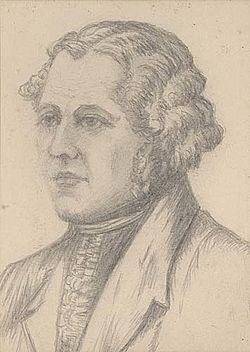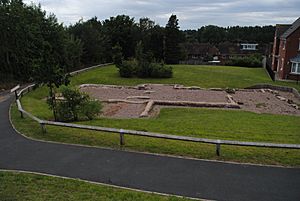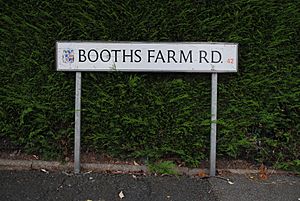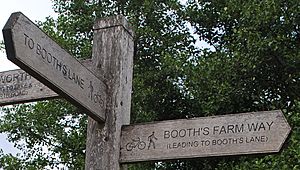William Booth (forger) facts for kids
Quick facts for kids
William Booth
|
|
|---|---|

Pencil sketch of Booth, artist unknown
|
|
| Born |
Hall End Farm near Beaudesert, Warwickshire, England
|
| Died | 15 August 1812 |
| Resting place | St Mary's Church, Handsworth |
| Nationality | English |
| Occupation | Farmer |
| Conviction(s) | Forgery |
| Criminal penalty | Death by hanging |
William Booth (1776–1812) was an English farmer who became known as a forger. A forger is someone who makes fake copies of things, like money or documents, to trick people. Booth was punished for his crimes. His story is told in a song called "Twice Tried, Twice Hung, Twice Buried" by Jon Raven and in a book. Some places in Birmingham, near where he used to live, are still named after him.
Contents
Early Life of William Booth
William Booth was born at Hall End Farm near Beaudesert, Warwickshire. He was baptised on February 21, 1776. He was one of eight children born to John and Mary Booth. His father was a farmer and also a church warden.
On February 28, 1799, Booth signed a 25-year agreement for a farm. This farm later became known as "Booth's Farm". It included a farmhouse and about 200 acres of land. The farm was part of the Perry Hall estate. At that time, the farm was in Perry Barr, Staffordshire. Today, this area is called Great Barr and is part of the city of Birmingham.
In 1808, Booth was accused of a serious crime against his brother. However, he was found not guilty because there was not enough proof.
People Who Helped Booth
Other people who worked with Booth were also put on trial. Those found guilty were sent to Australia. This was a common punishment at the time, where criminals were sent to live in a faraway colony.
One of Booth's helpers was Elizabeth Chidlow. She was sentenced to 14 years in Australia. She left England in August 1813 on a ship called the Wanstead. She arrived in Port Jackson (which is now Sydney), New South Wales, on January 9, 1814.
Two other people, George Scot and John Yates Snr., were each sent to Australia for seven years. All the other people who were on trial were found not guilty. Booth's wife was not charged, even though witnesses said she helped make the fake items. At that time, wives were often seen as being under their husbands' control.
Booth's Farm Today
The original farmhouse was taken down in 1974. Much of the farm's land had already been sold to build houses. When the farmhouse was demolished, experts studied the site to learn more about its history. In 1956, 45 fake bank tokens made by Booth were found in a garden on Foden Road, which used to be part of the farm. These tokens were made of a metal mix instead of real silver.
What was left of the farm became a quarry, where sand and gravel were dug up. Later, it was used as a landfill site for rubbish. Eventually, it was turned into a nature reserve, a protected area for wildlife. More houses were built in the 2010s. During this time, the buried foundations of the farmhouse were uncovered again, and an information board was placed nearby to tell its story.
Places Named After Booth
William Booth and his farm gave their names to several places that still exist today. These include Booths Lane and Booths Farm Road. These two roads are now separated by the M6 motorway, which was built through the old farm around 1972.
In recent years, other nearby places have also been named after Booth or his crimes. These include Forgers Walk (a walking tunnel under the motorway), Booths Farm Way, Booths Farm Close, Forger Lane, and Token Rise.
The Foden family lived on the farm until the late 1920s. Foden Road is named after them. The area around Booths Farm Road is known as the Booths Farm Estate.




